WILDLIFE
Heathlands are home to a fantastic mixture of wildlife. The poor soils and historic land use have led to a low-growing, shrub dominated habitat. This supports a unique mixture of plants, birds, reptiles and invertebrates, some of which are extremely rare. Here are a few of our favourites:
BIRDS
INVERTEBRATES
REPTILES
PLANTS
Heathland birds
Heathland is important for birds like the nightjar, stonechat and the much rarer woodlark and Dartford warbler. Many other common or garden birds are heathland visitors, living in neighbouring gardens or woodlands, making Dorset a bird-watcher’s paradise.
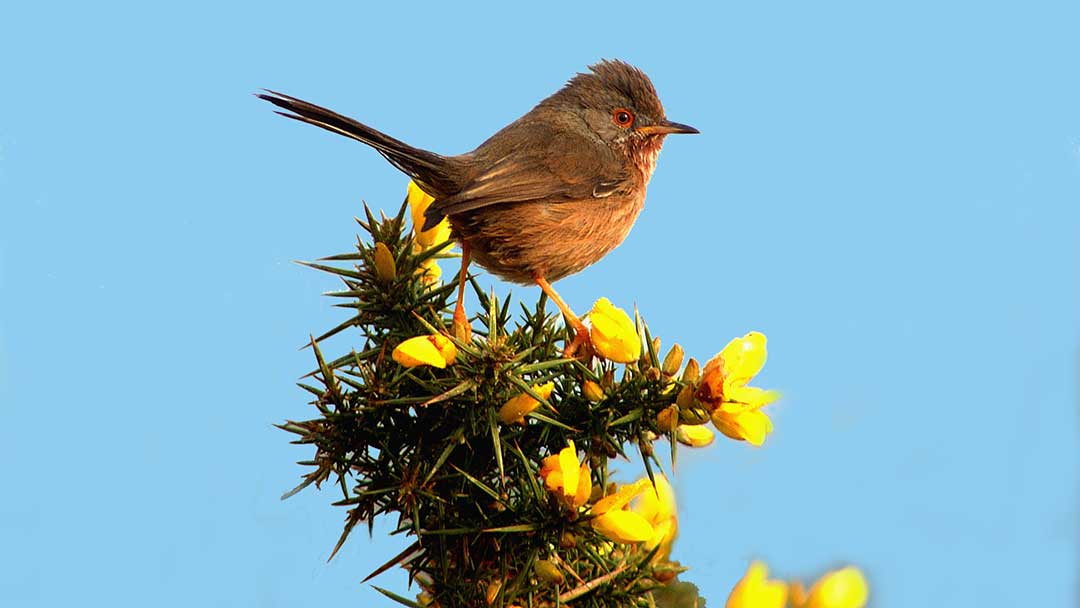
Dartford warbler (Sylvia undata)
Dartford warblers can be seen all year round on Dorset’s heaths. They sing their scratchy warble from perches and nest close to the ground, deep in the heather and gorse bushes. Dartford warblers have a strict insectivorous diet; heather and gorse are great insect larders. Because they do not migrate, Dartford warblers are very vulnerable to cold weather and harsh winters can have a dramatic impact on survival rates.
Photo Credits: K Cook
Nightjar (Caprimulgus europaeus)
Nightjars fly all the way from sub-Saharan Africa to nest on our heaths. They spend the days camouflaged out of sight before coming out at dusk to hunt moths and find a mate. The haunting ‘churr’ of the nightjar can be heard from late May to August and if you are lucky, you may even see their wing clapping display flight. Nightjars are very vulnerable to disturbance from people and dogs as they nest directly on the ground.
Photo Credits: N Donks
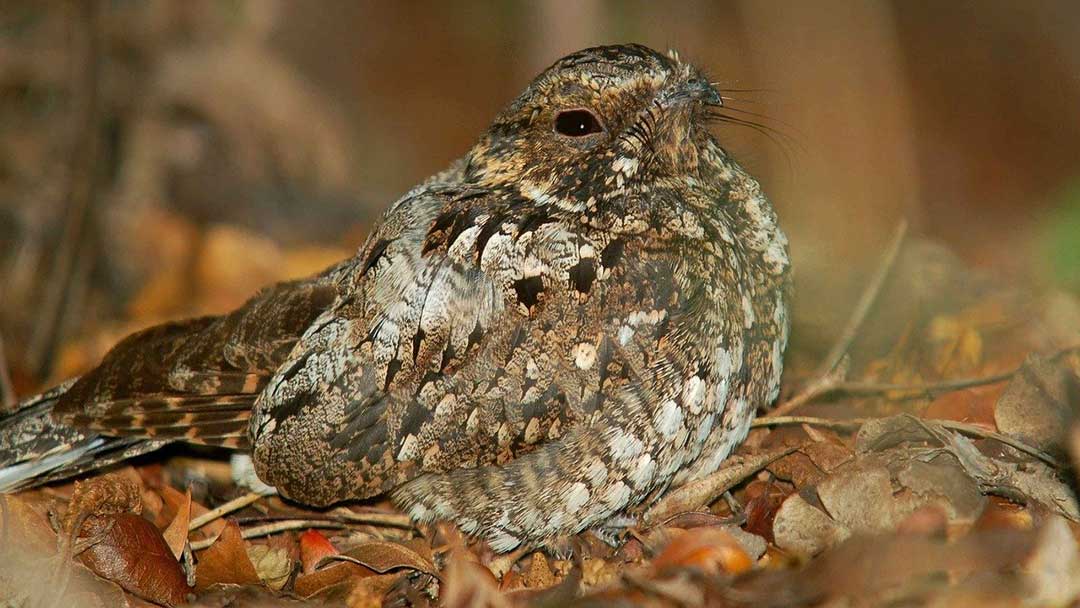
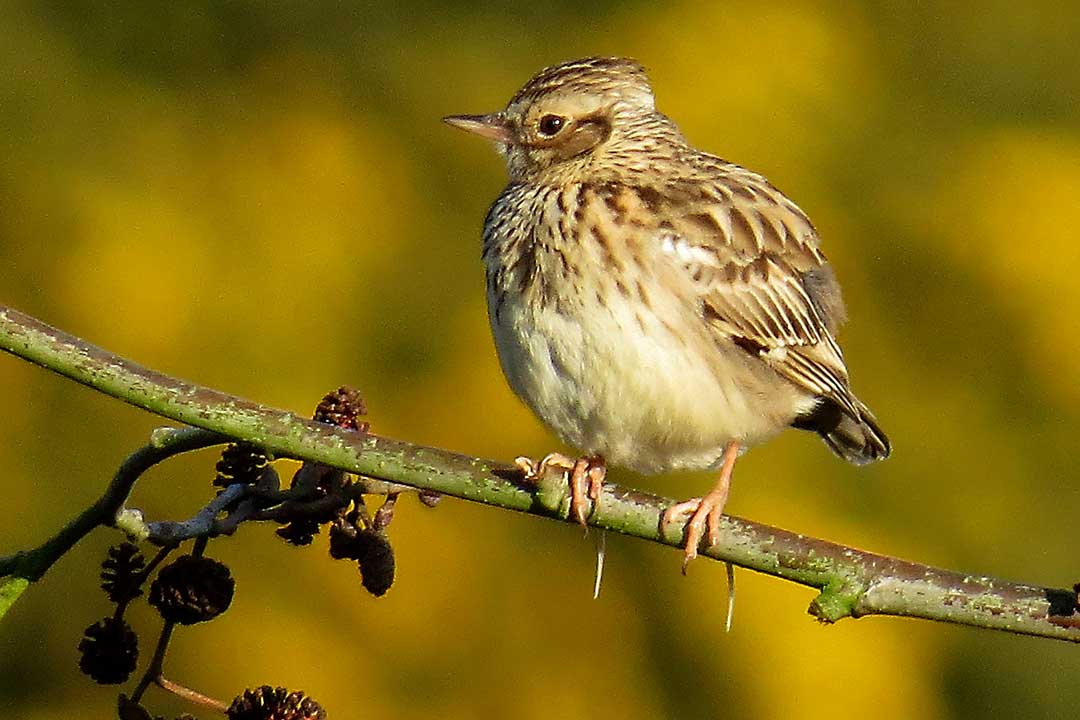
Woodlark (Lullula arborea)
Woodlarks are slightly smaller than skylarks and have a similar light brown colouring but with a small crest on top of their head. They can be found on some heaths year-round but are most visible when performing their display flight and song during the breeding season. Woodlarks also nest on the ground, making them very vulnerable to disturbance by people or dogs.
Photo Credits: J Dadds
Stonechat (Saxicola rubicola)
Stonechats are about the same size as a robin and the males have a black head and orange breast while the females are more of a light brown colour with a lighter orange breast. They get their name from the sound of their call which is very similar to the sound of two stones being hit together. Stonechats are present on the heaths all year round.
Photo credit: TheOtherKev
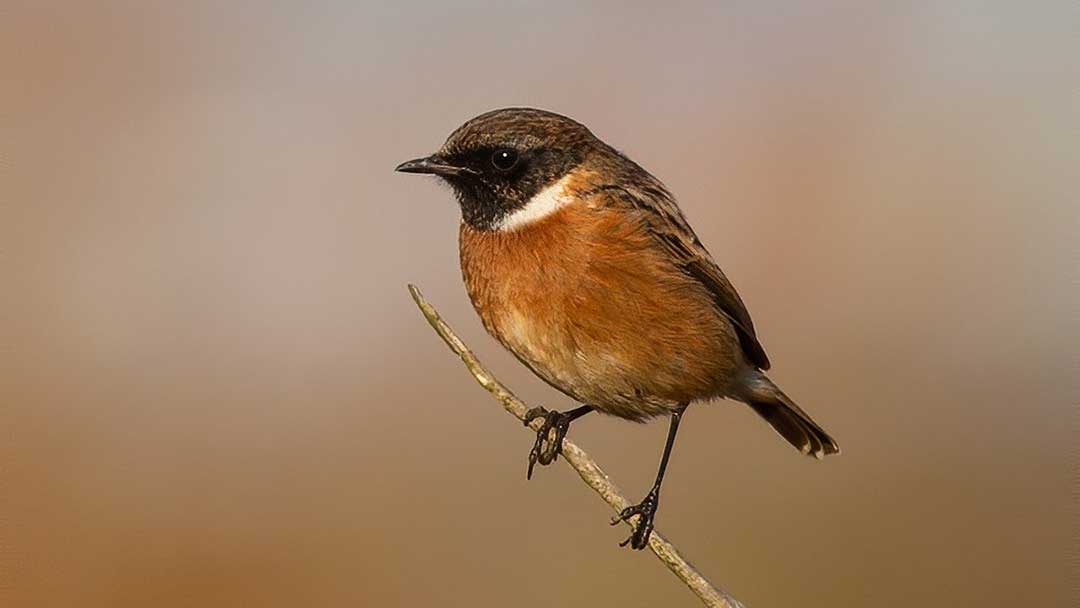
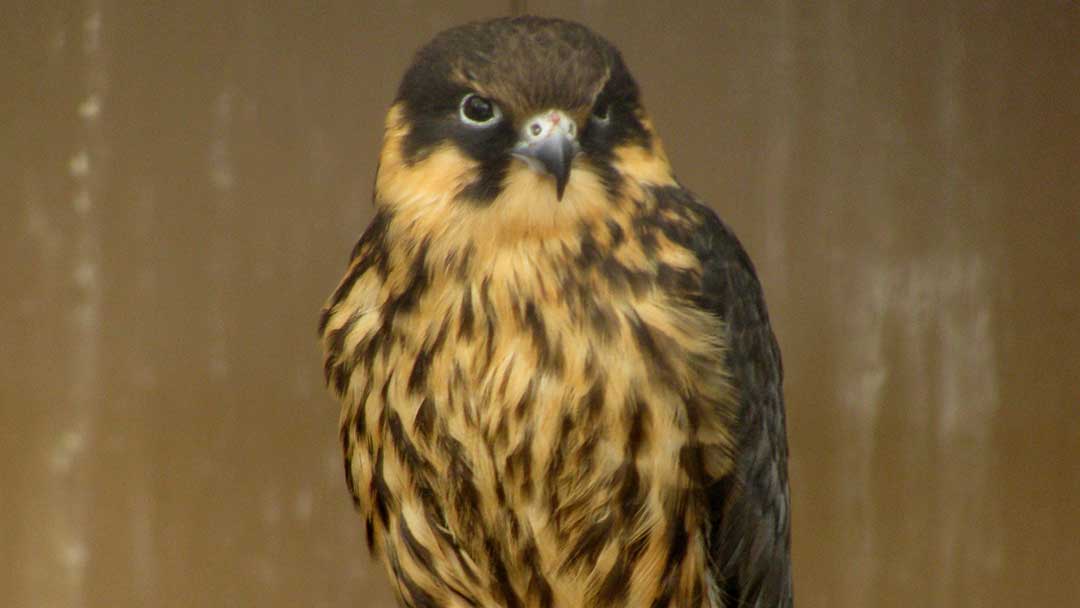
Hobby (Falco Subbuteo)
Hobbies can sometimes be spotted flying over the heaths. They are incredible aerial hunters and can catch dragonflies (and some birds) mid-flight. They are about the size of a kestrel but with more pointed wings and rusty red coloured ‘trousers’.
Photo credit: Tsippendale
Heathland invertebrates
The Purbeck mason wasp (Pseudepipona herrichii) is a rare species and only found on some heaths, partly because they have a very specialised diet. While the adults feed on the nectar from bell heather (Erica cinerea), the wasp larvae feed exclusively on the larvae of the heath button moth (Acleris hymana). The female digs a burrow and drags the moth larvae inside before laying her egg and sealing off the entrance.
Many dragonfly species can be seen on the heathland and contrary to popular belief, can be found far from water. The golden ringed dragonfly (Cordulegaster boltonii) is one of these. This large and agile dragonfly only needs water to breed and spends the rest of its time perched on branches or hunting other insects. The female is the UK’s longest dragonfly.
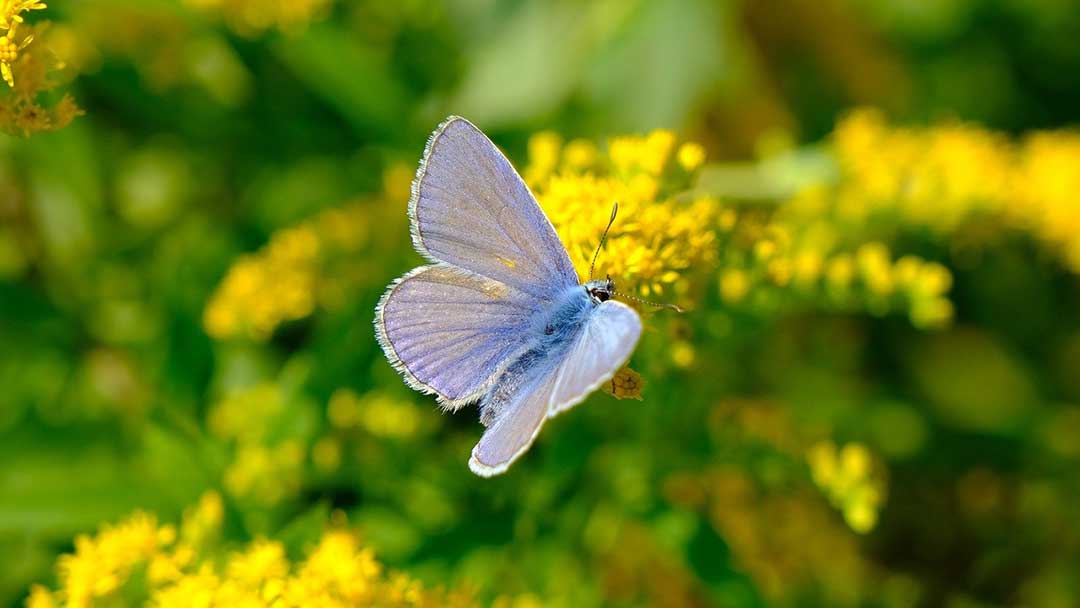
Butterflies & Moths
The rare silver-studded blue (Plebeius argus) and the largest moth to be found in the UK, the emperor hawk moth (Saturnia pavonia), can be found on Dorset heaths. They are two of 55 species of moth and butterfly caterpillar that has heather as its food plant.
Photo Credits: K Cook
Spiders
The raft spider (Dolomedes fimbriatus) is one of the largest spiders in the UK and can be found on our wet heathland sites. They hunt by floating on the surface of the water and feeling the ripples created by struggling prey.
Wasp spiders (Argiope bruennichi) are very striking with their black and yellow stripes that mimic the wasp. They spin webs that have a distinctive zig zag of silk through it called a stabilimentum, although the purpose of this is unclear.
The rare ladybird spider (Eresus sandaliatus) is found on a few sites in Dorset, but rarely seen, as they spend most of their life in burrows underground. The male has beautiful black and red markings that give them their name while the female is all black and is the heaviest spider found in this country.
Photo credit: sandyjohnhood
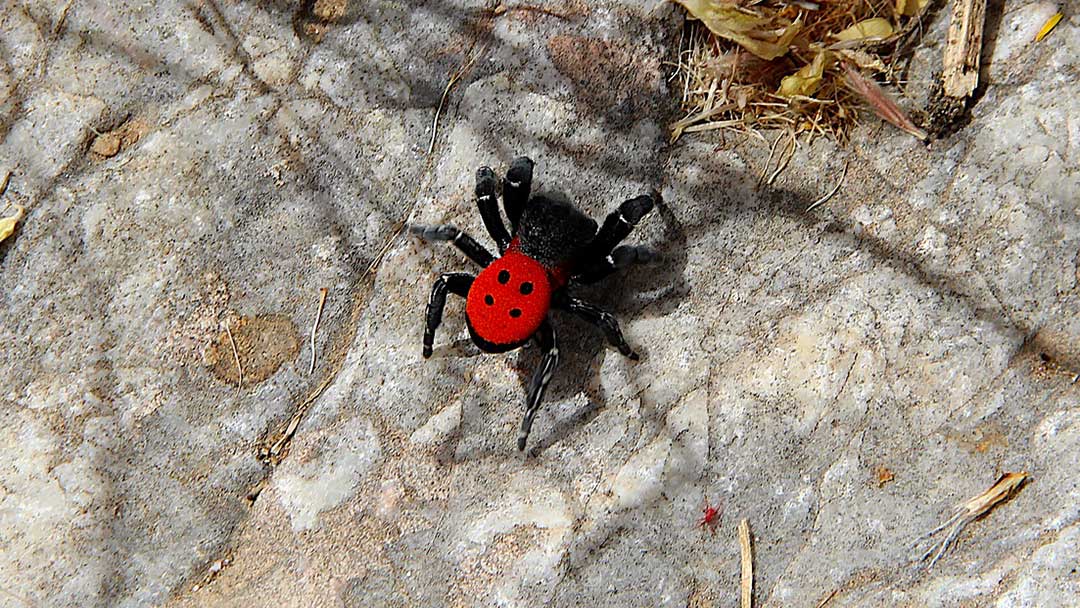
Heathland reptiles
Dorset Heaths are home to all six native reptiles: smooth snake, grass snake, adder, sand lizard, common lizard and slow worm.
Heaths are excellent for all reptiles because they have warm south-facing, sandy banks for basking in the sun, plenty of food and places to hibernate.
Adders, grass snakes, slow worms and common lizards can sometimes be found away from heaths in places such as on rough grassland alongside paths, forestry plantations, gardens and allotments, but smooth snakes and sand lizards are only found on the heath.
Sand lizards and smooth snakes are endangered heathland specialists and all UK reptiles are protected by law.
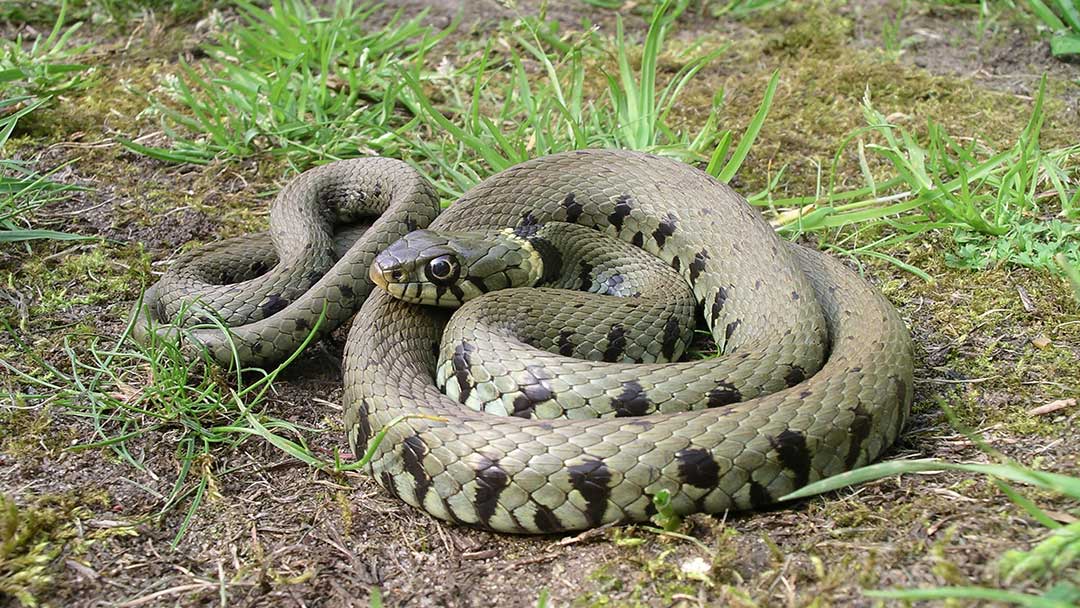
Grass snake (Natrix helvetica)
The grass snake is the largest snake found in Britain and can grow to 1.5m long. Grass snakes can be identified by a light or yellow coloured ring behind the head. They are non-venomous and use backwards facing fangs to trap and swallow prey whole (often still alive!). Their preferred prey are toads, frogs and newts. Because of this, they are often found near water. Grass snakes are the only snake species in the UK that lays eggs.
Photo Credits: @arc-trust
Adder (Viperus berus)
Adders are the only venomous species of snake in the UK, but bites are rare, almost always non-fatal and often the result of them being stepped on or handled. Adders are easily identifiable by their brown or black zig zag pattern and will quickly move out of sight if they sense anyone approaching. They eat small rodents such as voles or mice which they hunt during the day. Adders give birth to live young in late summer.
Photo Credits: @arc-trust
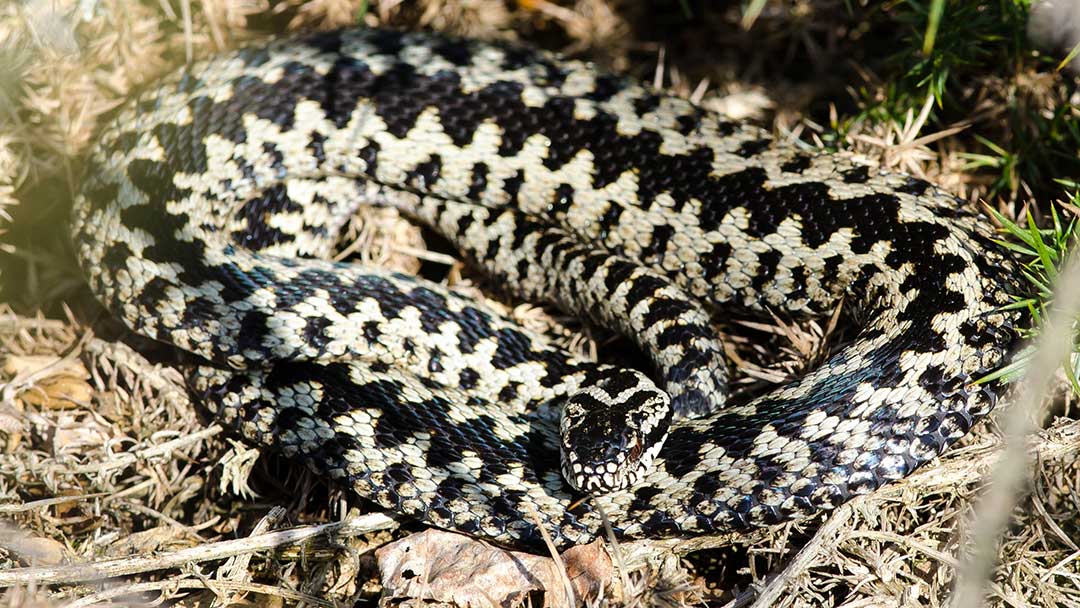
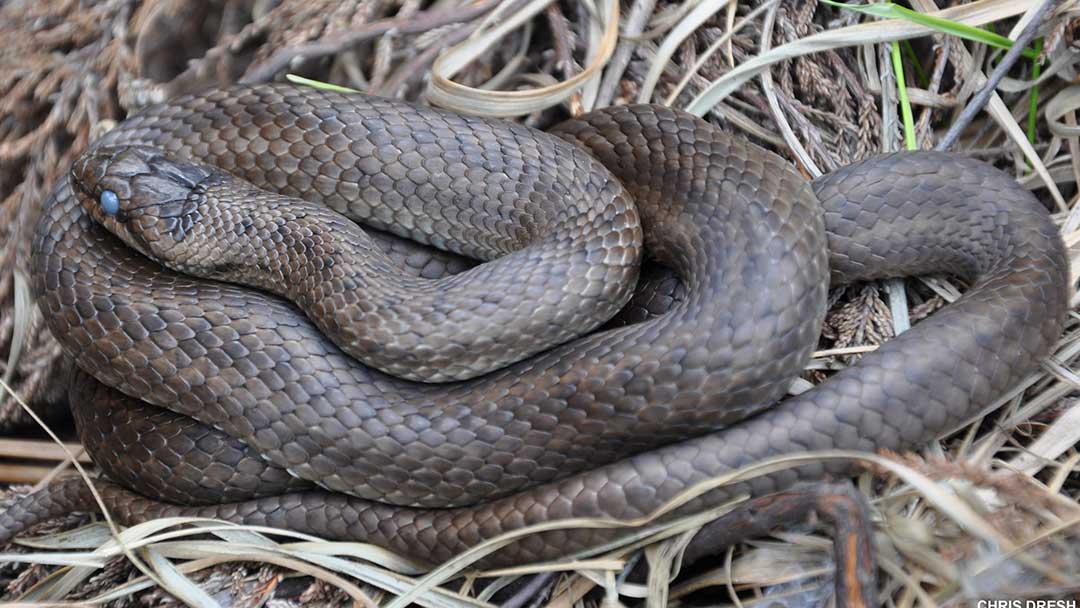
Smooth snake (Coronella austriaca)
Smooth snakes are the rarest snake in the UK and are very rarely seen, even on Dorset’s heaths. They are very secretive, basking under partial cover and disappearing as soon as they sense a presence. They are non-venomous and pose no risk to humans, constricting sand lizards, slow worms and chicks to eat. They are light brown in colour and can be mistaken for adders, although they don’t have the tell-tale zig zag on their back. Like the slow worm, they give birth to their young after they have grown as eggs and hatched inside the female.
Photo Credits: @arc-trust
Common lizard (Zootoca vivipara)
Common lizards are found in a variety of habitats in the UK, including heathlands. They can often be seen basking in sunny spots before quickly darting to cover as soon as anyone comes near. They are usually brown with a pattern of spots or stripes and are smaller and more slender than the rare sand lizard. Confusingly, some common lizards can be green in colour. Common lizards mainly eat insects and give birth to live young in summer.
Photo Credits: @arc-trust
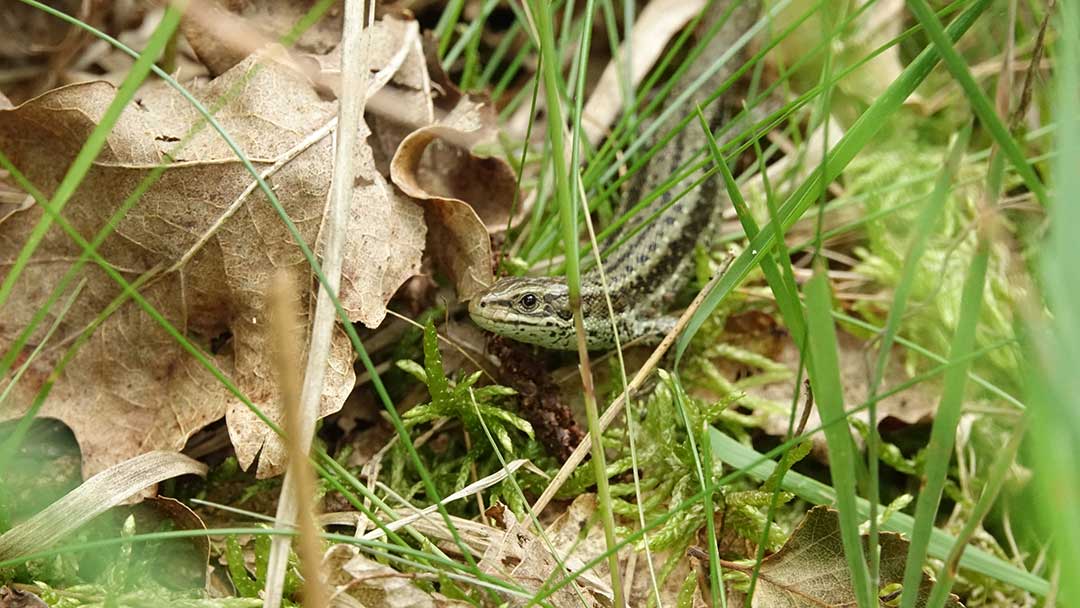
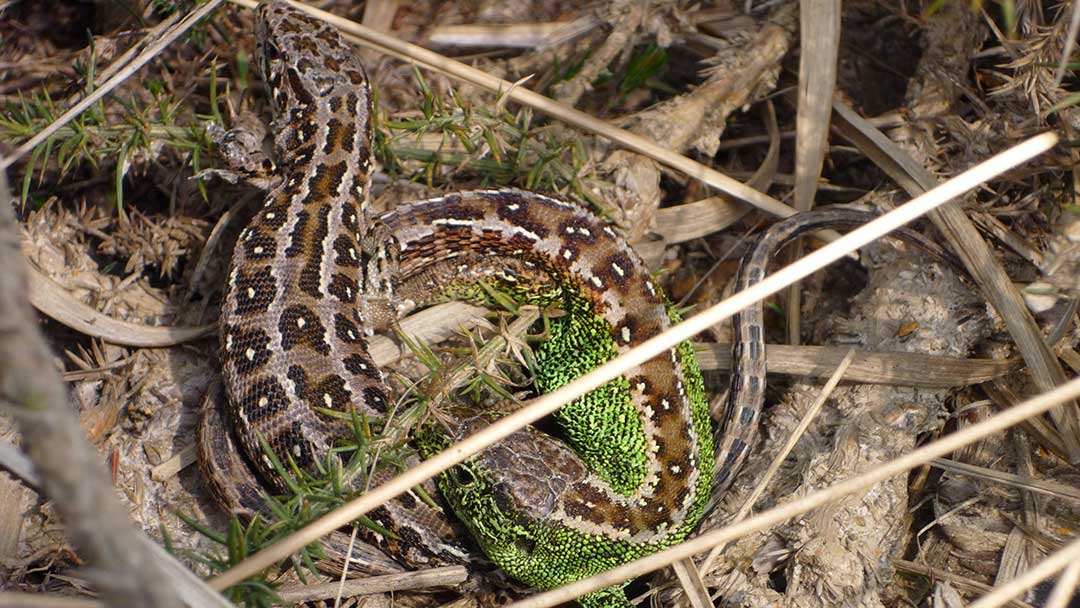
Sand lizard (Lacerta agilis)
The sand lizard is the UK’s rarest lizard and can be found on many of Dorset’s heaths. They are larger and chunkier compared to common lizards and are mostly brown with pale spots that have a dark border. Males have bright green sides during the breeding season. Sand lizards dig burrows in sandy ground to provide shelter and to lay their eggs. The sand keeps the burrow at an even temperature, allowing the eggs to hatch successfully.
Photo Credits: A Fale
Slow worm (Anguis fragilis)
Slow worms are actually legless lizards. The best way to identify them is by their shiny grey or brown body and if you get close enough, you can see them blink (lizards have eyelids, whereas snakes do not). Slow worms can shed their tail if they feel threatened and the tail will keep moving to distract predators. They mainly eat spiders, slugs and snails so are often found in gardens too. Slow worms give birth to their young after they grow as eggs and hatch inside the female.
Photo Credits: A Fale
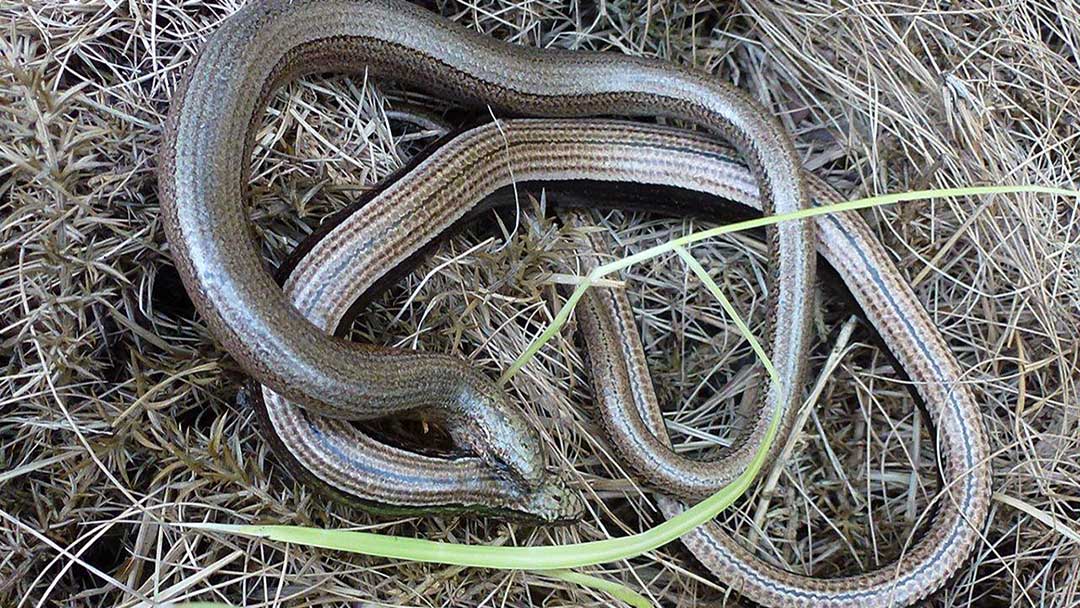
Heathland plants
The word “heath” is derived from heather and the people who lived on the heath were the original “heathens”. All wild plants and flowers found on the heath are protected.
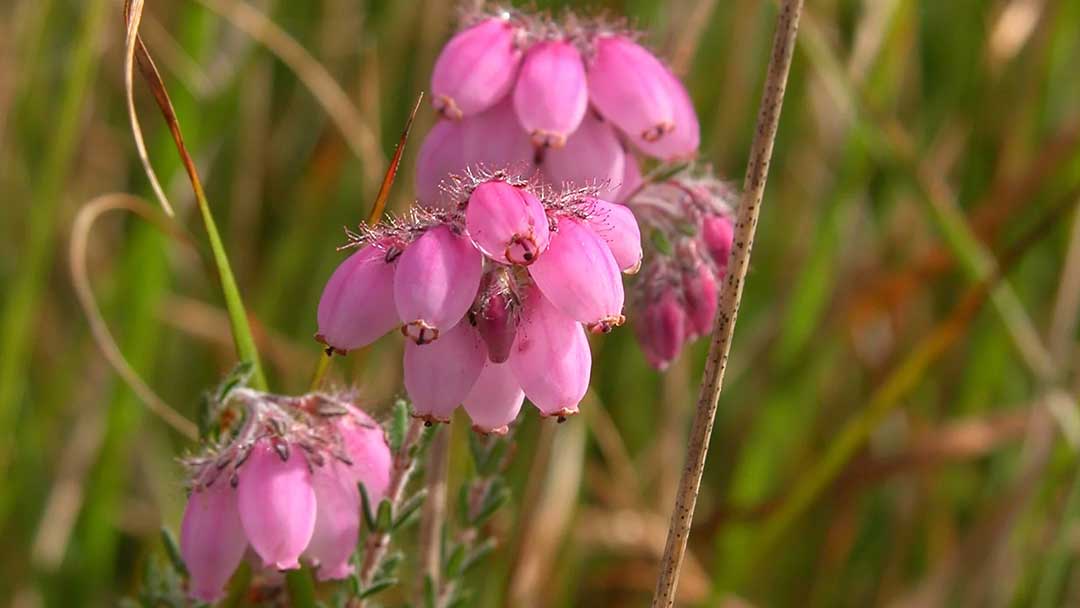
Heathers
There are different types of heather found in Dorset: ling or common heather (Calluna vulgaris), bell heather (Erica cinerea), cross-leaved heath (Erica tetralix), and Dorset heath (Erica ciliaris). There is also a hybrid Erica watsonii. Ling and bell heather prefer dry heath whereas cross-leaved heath and Dorset heath are more often found in wetter areas. The slow growing nature of heather allows it to grow in acidic, nutrient poor conditions.
Photo Credits: A Fale
Marsh gentian (Gentiana pneumonanthe)
These rare and beautiful blue trumpet-shaped flowers can be seen on a handful of wet heaths during late summer. Historically, they were used to produce a blue dye. A white variety has also made an appearance on Dorset’s heaths.
Photo Credits: A Fale
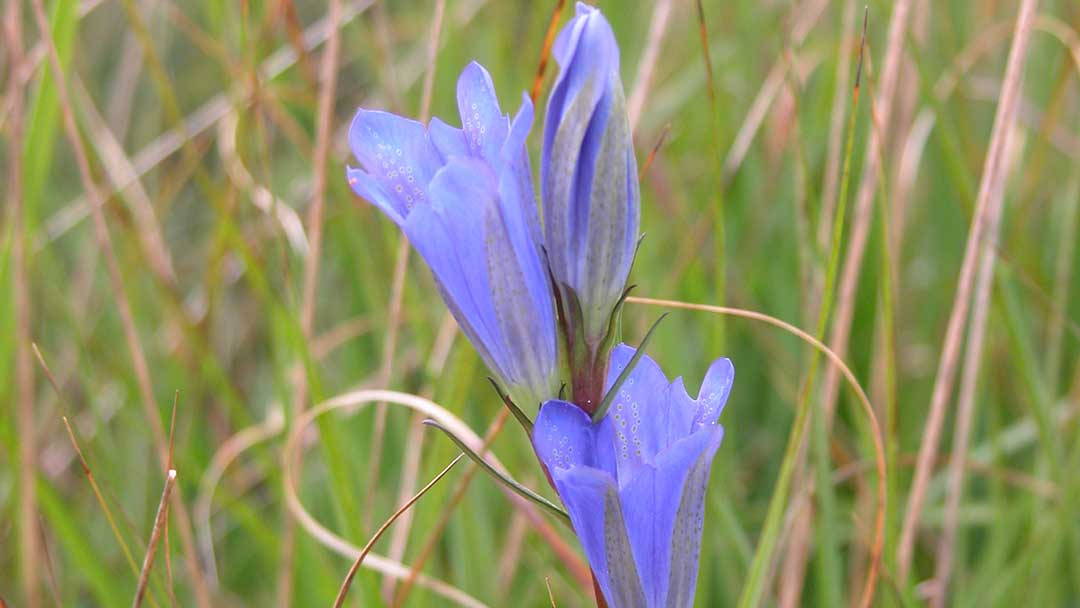
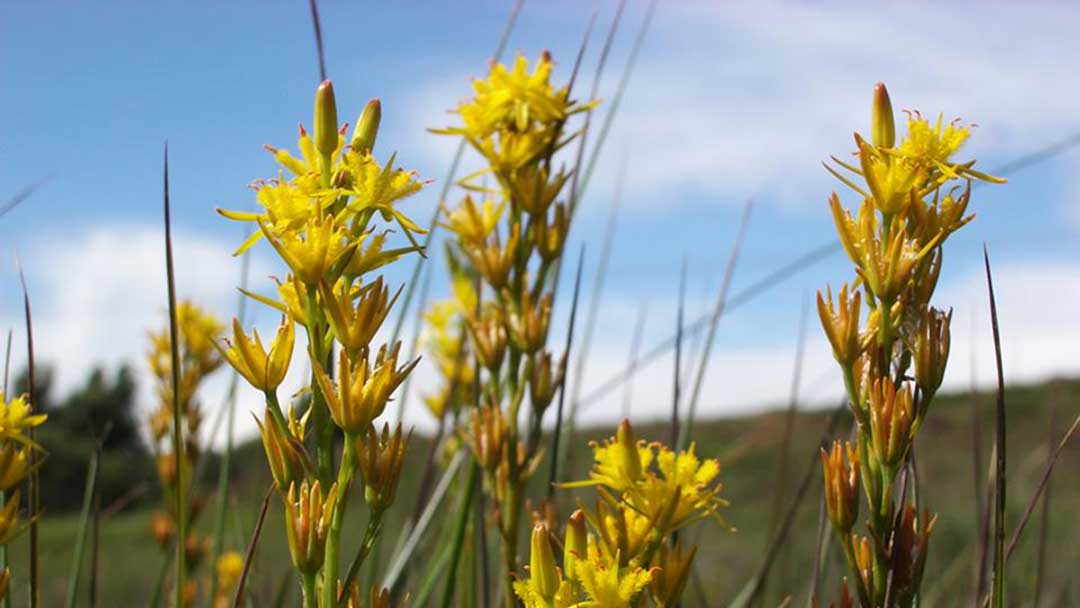
Bog asphodel (Narthecium ossifragum)
In early summer, bright yellow spikes of bog asphodel flowers carpet wet areas of heathland. As the star-shaped flowers mature they turn a magnificent burnt orange. The Latin name ‘ossifragum’ means ‘bone breaker’ as it was believed to cause brittle bones in sheep that grazed it. We now know that the real cause was the lack of minerals in plants that grow on poor heathland soils.
Photo Credits: A Fale
Insectivorous plants
Some heathland plants get their nutrition from trapping insects, these include the sundews. There are three types of sundew on the heaths in Dorset; the round-leaved sundew (Drosera rotundifolia) and the oval-leaved sundew (Drosera anglica), plus the oblong-leaved sundew (Drosera intermedia) which is found on just a small number of sites. Sundews have tiny tendrils covered in small droplets of a sticky liquid that mimic dew. Insects land on the leaves to drink and the dew not only traps unsuspecting prey but also digests them as the leaves curl in on themselves. It takes 3 to 5 days for the sundew to consume an insect.
The pale butterwort (Pinguicula lusitanica) is another insectivorous heathland plant. These plants also attract flies, midges and even dragonflies onto their sticky leaves by imitating water droplets. The insect is then absorbed by the plant.
Photo Credits: A Fale
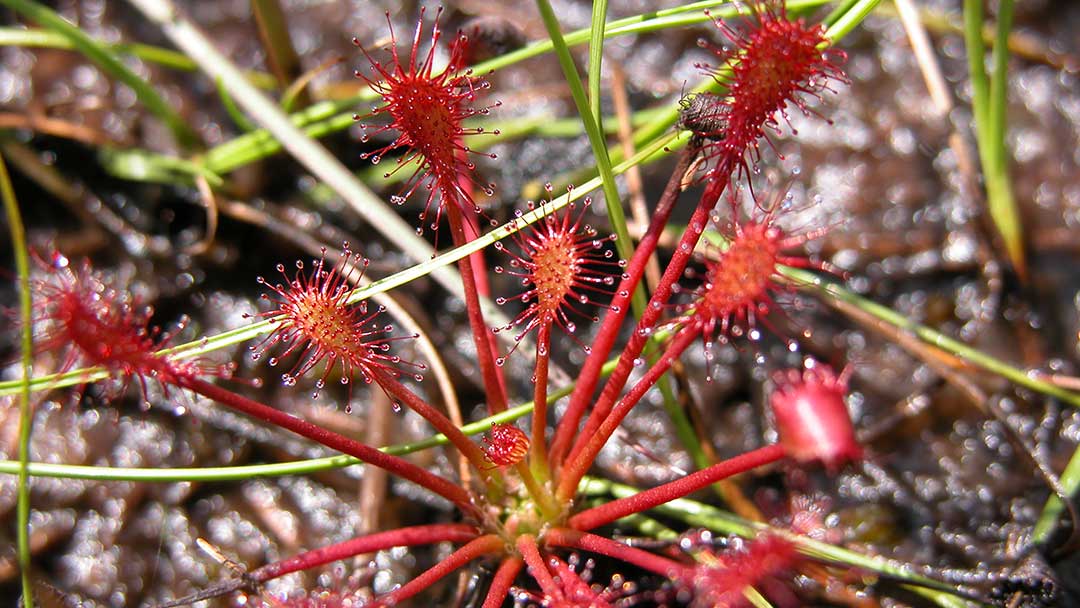
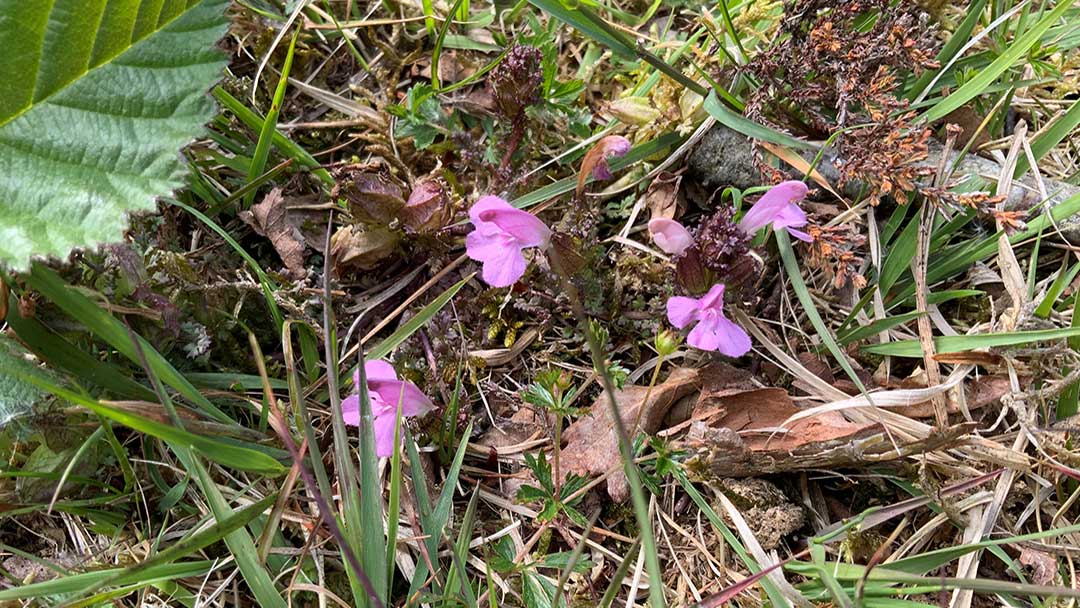
Parasitic plants
Common lousewort (Pedicularis sylvatica) grows in wet areas and is semi-parasitic. This means it gets its nutrients from a combination of photosynthesis and the roots of other nearby plants that it has hijacked.
Common dodder (Cuscuta epithymum) on the other hand, is fully parasitic. The plant is made up of a network of thin red threads that cover and wrap themselves around neighbouring plants. They then tap into the branches and stems of these plants using suckers that steal nutrients, allowing the dodder to spread.
Credit for main header photo – Heather Radice

